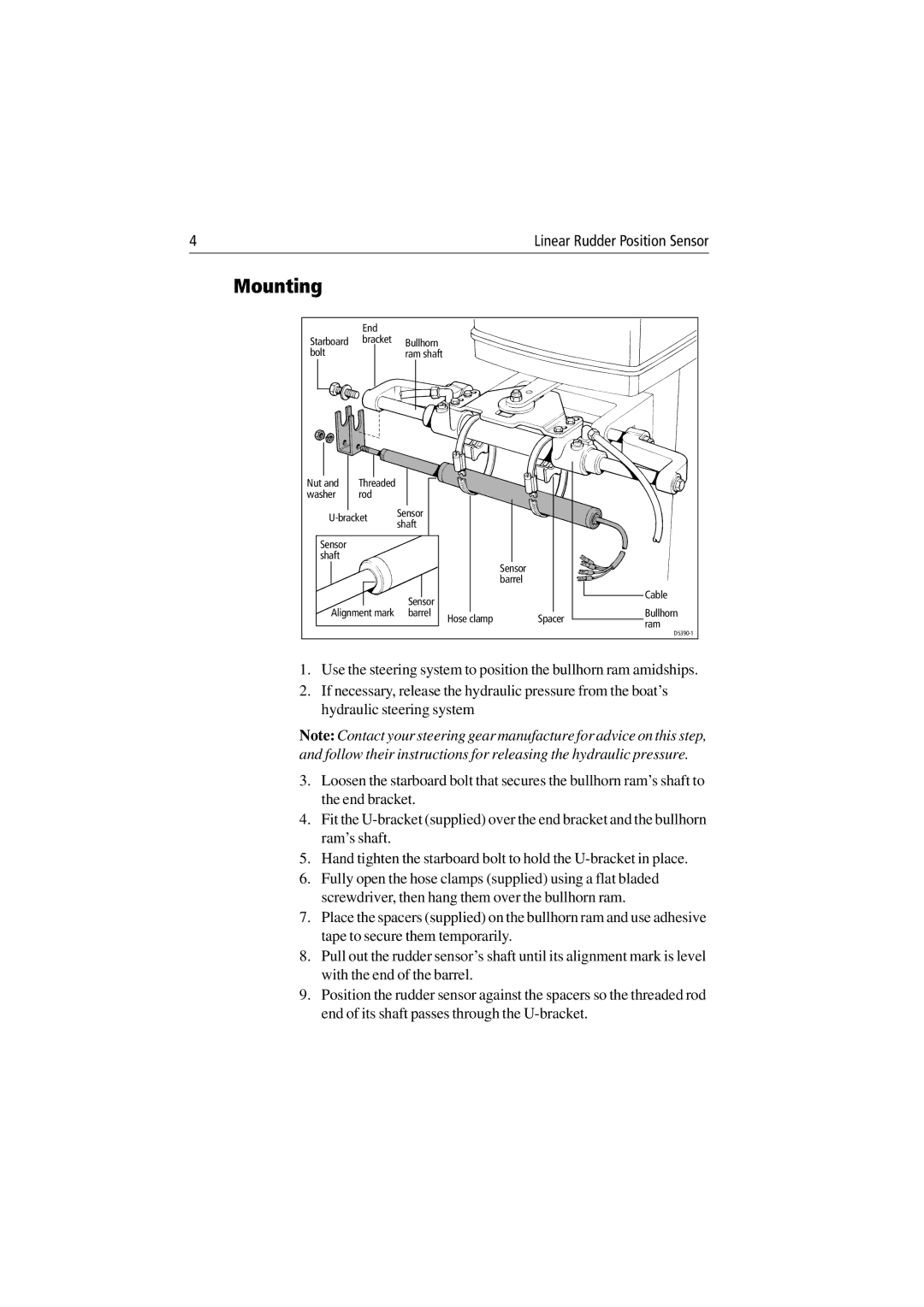
4 | Linear Rudder Position Sensor |
Mounting |
|
|
|
|
|
| End |
|
|
|
|
Starboard | bracket | Bullhorn |
|
|
|
bolt |
| ram shaft |
|
|
|
Nut and | Threaded |
|
|
|
|
washer | rod |
|
|
|
|
Sensor |
|
|
| ||
shaft |
|
|
| ||
|
|
|
|
| |
Sensor |
|
|
|
|
|
shaft |
|
|
|
|
|
|
|
|
| Sensor |
|
|
|
|
| barrel |
|
|
| Sensor |
|
| Cable |
Alignment mark |
|
|
| ||
barrel | Hose clamp | Spacer | Bullhorn | ||
|
|
| ram | ||
|
|
|
|
| |
|
|
|
|
| |
1.Use the steering system to position the bullhorn ram amidships.
2.If necessary, release the hydraulic pressure from the boat’s hydraulic steering system
Note: Contact your steering gear manufacture for advice on this step, and follow their instructions for releasing the hydraulic pressure.
3.Loosen the starboard bolt that secures the bullhorn ram’s shaft to the end bracket.
4.Fit the
5.Hand tighten the starboard bolt to hold the
6.Fully open the hose clamps (supplied) using a flat bladed screwdriver, then hang them over the bullhorn ram.
7.Place the spacers (supplied) on the bullhorn ram and use adhesive tape to secure them temporarily.
8.Pull out the rudder sensor’s shaft until its alignment mark is level with the end of the barrel.
9.Position the rudder sensor against the spacers so the threaded rod end of its shaft passes through the
